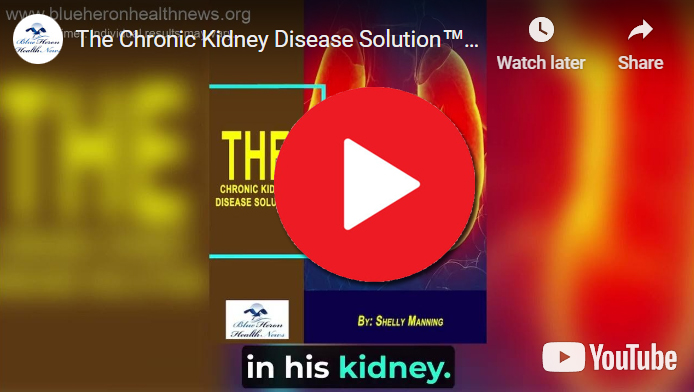
The Chronic Kidney Disease Solution™ by Shelly Manning It is an eBook that includes the most popular methods to care and manage kidney diseases by following the information provided in it. This easily readable eBook covers up various important topics like what is chronic kidney disease, how it is caused, how it can be diagnosed, tissue damages caused by chronic inflammation, how your condition is affected by gut biome, choices for powerful lifestyle and chronic kidney disease with natural tools etc.
What are the signs of liver disease in chronic kidney disease patients?
Liver disease can present with a variety of signs and symptoms in patients with Chronic Kidney Disease (CKD). The overlap of symptoms between these two conditions can make diagnosis challenging, but it is crucial to recognize the signs of liver dysfunction early for appropriate management. Here are some common signs and symptoms of liver disease in CKD patients:
1. Jaundice
- Yellowing of the Skin and Eyes: Jaundice occurs due to the buildup of bilirubin, a byproduct of red blood cell breakdown, which the liver usually processes. In liver disease, the liver’s ability to process bilirubin is impaired, leading to yellowing of the skin and eyes.
2. Ascites
- Abdominal Swelling: Ascites refers to the accumulation of fluid in the abdominal cavity, a common sign of liver disease, particularly cirrhosis. This can also occur in CKD patients due to fluid retention, making it essential to differentiate the underlying cause.
3. Hepatic Encephalopathy
- Cognitive Changes: Hepatic encephalopathy results from the accumulation of toxins, such as ammonia, that the liver fails to detoxify. Symptoms include confusion, forgetfulness, mood changes, and in severe cases, coma. These symptoms can be subtle and may overlap with uremic encephalopathy in CKD.
4. Spider Angiomas and Palmar Erythema
- Skin Changes: Spider angiomas (small, spider-like blood vessels visible on the skin) and palmar erythema (reddening of the palms) are common in liver disease. These signs are due to hormonal changes and vascular dilation associated with liver dysfunction.
5. Edema
- Swelling in the Legs and Feet: Edema is common in both CKD and liver disease, but in liver disease, it is often associated with low albumin levels (hypoalbuminemia) and portal hypertension. This swelling is typically more pronounced in the lower extremities.
6. Fatigue and Weakness
- General Malaise: Both liver disease and CKD can cause significant fatigue and weakness. In liver disease, this is often due to the liver’s reduced ability to metabolize nutrients and detoxify the blood, leading to systemic effects.
7. Pruritus (Itching)
- Severe Itching: Itching is a common symptom in liver disease due to the buildup of bile acids in the skin, a condition known as cholestasis. It can also be seen in CKD, where uremic toxins contribute to the sensation.
8. Dark Urine
- Changes in Urine Color: Dark urine can be a sign of liver disease due to the excretion of excess bilirubin. In CKD, changes in urine output and color are also common, so this symptom needs careful evaluation.
9. Gastrointestinal Bleeding
- Varices and Coagulopathy: Liver disease can lead to gastrointestinal bleeding due to the development of varices (enlarged veins) and coagulopathy (impaired blood clotting). Signs include vomiting blood (hematemesis) or passing black, tarry stools (melena).
10. Enlarged Liver (Hepatomegaly) or Spleen (Splenomegaly)
- Palpable Organ Enlargement: An enlarged liver or spleen can be detected during a physical examination and is a common sign of chronic liver disease. This can also complicate the management of fluid balance in CKD patients.
Sources:
- National Institute of Diabetes and Digestive and Kidney Diseases (NIDDK): Provides comprehensive information on liver disease symptoms and their overlap with CKD (NIDDK).
- Mayo Clinic: Offers detailed descriptions of liver disease symptoms and their management (Mayo Clinic – Liver Disease).
- American Kidney Fund: Discusses the connection between kidney and liver disease, focusing on the importance of early detection and management (American Kidney Fund).
Recognizing these signs and symptoms early is critical for managing patients with both CKD and liver disease effectively. Regular monitoring, careful evaluation, and a tailored treatment approach are essential to prevent complications and improve patient outcomes.
The Chronic Kidney Disease Solution™ by Shelly Manning It is an eBook that includes the most popular methods to care and manage kidney diseases by following the information provided in it. This easily readable eBook covers up various important topics like what is chronic kidney disease, how it is caused, how it can be diagnosed, tissue damages caused by chronic inflammation, how your condition is affected by gut biome, choices for powerful lifestyle and chronic kidney disease with natural tools etc.
